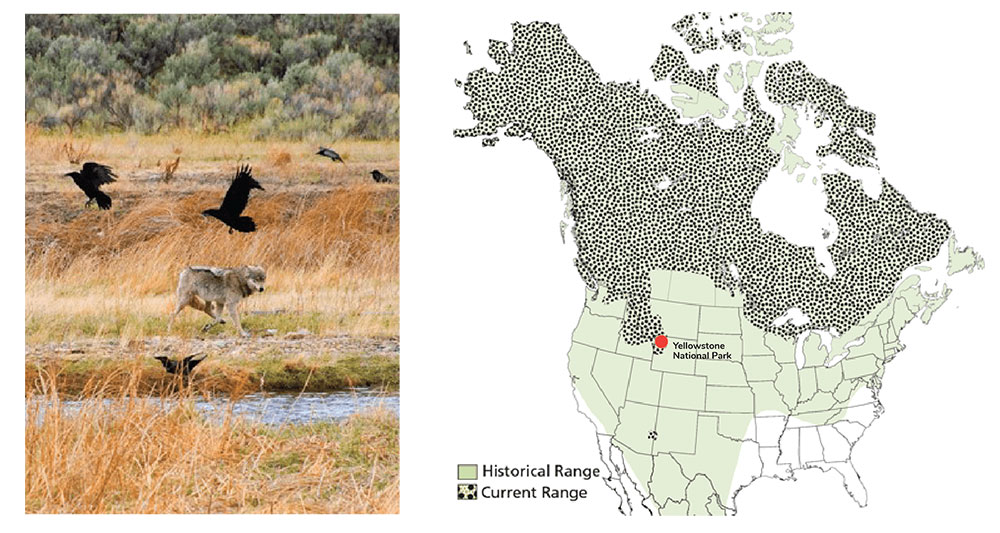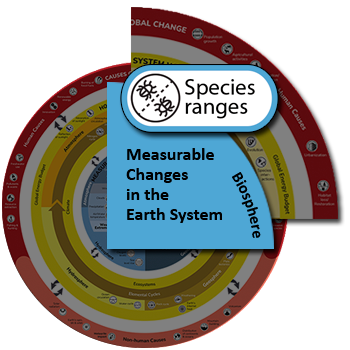A species range is the geographic area over which all the individuals of that species live. Note that within that area there may be regions where the species does not, or cannot, live because there might not be suitable habitat for the species. For example, within the species range of deer, they cannot live where there are high, steep mountains. For species that do not migrate, their ranges provide all the resources they need to live, such as food, water, shelter, and places lay eggs or rear their young. For species that migrate, for example, many bird and whale species, some parts of their range might be used for feeding for part of the year, while other parts of their ranges might be used to give birth.

Wolves were once found in North America from the Arctic to Mexico. After the 1920s, wolves were no longer found in most of the lower 48 states due to habitat fragmentation and hunting. In 1973, wolves became protected under the Endangered Species Act. Since that time, populations have stabilized and the species has been reintroduced to Yellowstone National Park. Adapted from the National Park Service: Cycles and Processes and Gray Wolf
Species ranges are affected by many Earth system processes and phenomena, including:
- Evolutionary processes, which determine species’ traits and thus the conditions under which they can survive and reproduce.
- Species interactions, especially for species that depend on other organisms for food or shelter, or compete for food, space, or nesting sites.
- Climatic conditions, such as the amount of sunlight absorbed at different latitudes, temperature, and precipitation
- The movement of tectonic plates, which over millions of years alters the distribution of continents and ocean affecting how organisms can move among land masses and ocean basins.
- Numerous other abiotic environmental factors that determine where organisms can survive including soil quality, nutrient levels, water acidity, and oxygen levels.
Humans have altered species ranges through a variety of activities, including:
- Fishing and hunting, which can deplete species populations and cause local extinctions, which decrease species’ ranges.
- Habitat destruction, due to deforestation, agricultural activities, urbanization, the removal of water for human consumption, and/or the release of pollutants and waste into ecosystems.
- Introducing invasive species that can cause species ranges to decrease, and even cause the extinction of native species.
Can you think of additional cause and effect relationships between species ranges and other parts of the Earth system?
Visit the evolution, species interactions, and life cycles and traits pages to explore more connections between the biosphere and global changes.
Investigate
Learn more in these real-world examples, and challenge yourself to construct a model that explains the Earth system relationships.
- Climate change causes loss of genetic diversity
- A closer look at a classic ring species
- How to survive a mass extinction
